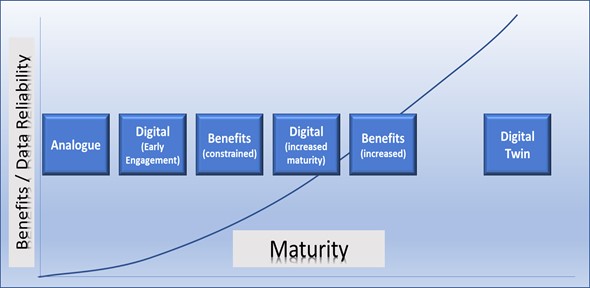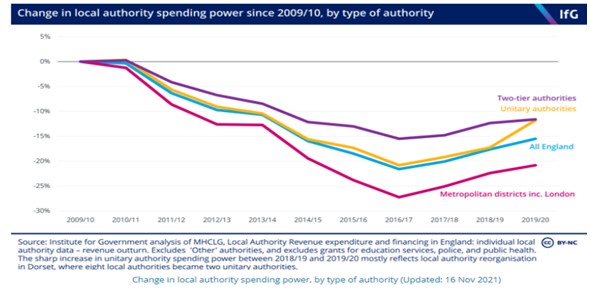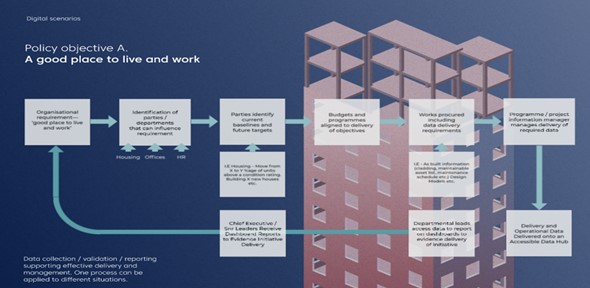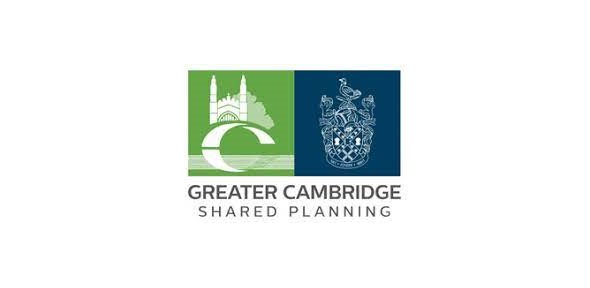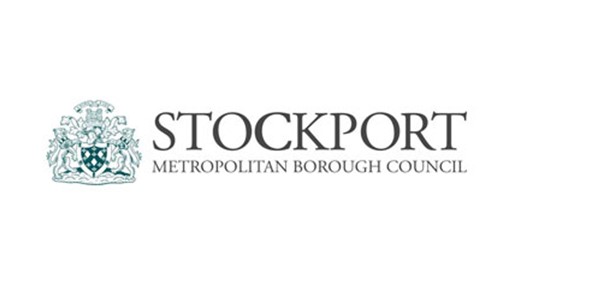
Submitted by Jo Daye on Thu, 31/03/2022 - 11:47
Executive Summary
Our world is changing: the way local authorities provide products and services, as well as people’s expectations of how they are delivered, are changing. Finances and resources are, and will be, increasingly stretched. This leads to a growing tension that can lead to dissatisfaction, defection and disappointment.
In addition, achieving improved quality at a lower cost, as well as increased resilience in our changing world, is key. We must focus on driving out waste, streamlining process and practices, being clear on required outcomes and measuring them to drive improvement.
A key approach to address these issues is the adoption of digital ways of working and information management. To find out more about how this is delivering benefits in practice read the Greater Cambridge Shared Planning case study about the move to apply a digital solution to the delivery of their Local Plan.
Creating reliable digital estates and asset records will support information sharing, driving out waste and supporting better service and tender pricing. The Stockport Metropolitan Borough Council case study brings this to life.
Adopting digital approaches to project initiation, delivery, handover and operations will support in improving collaboration and ownership of outcomes. Our Digital Roadmap to support Building Information Modelling (BIM) delivery and the Government Soft Landings navigators tools provide an easy entry point to developing and trialling a digital process within an organisation. Adopting new ways of working may be considered as disruptive to an organisation that is already facing delivery pressures. However, taking a ‘small steps’ approach is possible, building awareness and confidence to support wider engagement and decision making.
The work of the Local Authority Digital Working Group, which for the past three years has been hosted at the Centre for Digital Built Britain as a partner in the Construction Innovation Hub, has, and will continue to be, focused on enabling public sector organisations to grow their awareness of digital information management and BIM. The group is now beginning a new chapter and, from April 2022, will be hosted and championed by the Local Government Association (LGA), who will take the agenda forward. The group invites engagement and feedback and welcomes new members to join. It provides a peer group for local authorities to seek information, ask questions and support an authority’s engagement and journey.
Background
The Local Authorities Digital Working Group (LADWG) is made up of local authorities at differing levels in terms of their digital awareness, adoption, and expertise. The group’s remit has been to consider the potential benefits and blockers to introducing digital and information management initiatives within the local authority sector. The group produced a series of papers, tools and guidance to help local authorities to make informed decisions about engaging with new ways of working. The LADWG does not promote ‘full immersion’ setting the bar at full compliance with digital codes of practice, investment in bespoke software etc. It works on the presumption that cost-free or low-cost solutions can enable an organisation to conduct small scale proof of concept trials to test elements of digital adoption and information management. This approach helps to build organisational awareness and an appreciation of the benefits that could be experienced meaning any business change or investment can be planned with more certainty of outcome.
This paper reflects on the work produced by the group and includes peer case studies that outline the successful journey that local authorities have undertaken and the benefits that this has brought.
What is digital adoption?
In many organisations there is a lack of commonality between systems. The way information is managed, requested, received and accessed differs across an organisation. New information is often added to systems; however, old and outdated information is not archived or deleted. It is therefore difficult to act with confidence and, in many cases, time and money is wasted in having to validate the information each time it is accessed. Within an estate management and capital projects procurement function, data is requested by one part of the organisation for delivery and used by another. However, those parties often do not effectively engage with each other resulting in repeated surveys of assets. The constant resurvey and investigation of asset information is brought about because an organisation does not have confidence in the validity of its held data and therefore does not want to include it within shared information.
Local Authority Chief Executives and their management boards are accountable for proving that statutory obligations have been discharged and organisational policies or strategies are being effectively delivered. They may face increasingly tough decisions in the form of budget challenges, with a backdrop of changing and growing priorities, including the delivery of net zero carbon, providing affordable homes and services, creating sustainable communities etc.
A digital approach to information specification, collection, testing, storage, sharing and use, provides a structure that supports effective management of the information process, it ensures data and information can be regarded as a reliable asset and not a liability. Therefore, an agreed and structured digital information management process and system within an organisation will provide robust evidence trails for corporate discharging of requirements, and reliable reporting on the delivery of key initiatives.
Diag 1: As an organisation’s adoption of digital and information management increases the level of data reliability and delivered benefits grows.
Why adopt digital processes to Information Management (IM)?
We already adopt digital ways of working across many aspects of our lives including banking, shopping, booking holidays and buying cars. We use the internet and supplier portals to inform decision making, conduct enquiries and close transactions. The portals used often have supplier feedback, helping users to build up a knowledge of that supplier, product, service or league tables to provide consolidated data, for example creating ranking lists - all of which help with decision making. Engaging with digital in this way drives efficiency, enabling cost and benefits to be analysed, improving the reach and productivity of organisations. Those organisations that score well in rankings have to demonstrate excellent customer service and be accessible. There are lessons to be learnt here for all organisations. Digital information management approaches will support more effective service delivery and organisational productivity along with higher user satisfaction. The transition from ‘analogue’ to ‘digital’ approaches can be staged. Initially deploying information management robustness within an organisation and eventually building up to self-service systems with customer support services as appropriate.
The diagram below demonstrates the budget challenges local authorities are facing, from a 2009/10 baseline current budgets are around 10-20% lower. There is no one solution to solve the income gap challenge, but the implementation of digital initiatives will form part of the answer, supporting efficiencies, improving access to information, reducing asset re-survey requirements, and provide timely information discovery for Freedom of Information (FOI) requests etc.
Increasingly local authority budgets are dependent on grant funding applications. Access to reliable asset data and the ability to demonstrably evidence previous successful programme outcomes will support more robust applications and business cases. Local authorities increasingly have a need to drive additional investment to support the delivery of an authority’s aspirations and place making outcomes. Creating a ‘single version of the truth’ enables better monitoring of outcomes and supports supplier negotiations and challenge. Reliable data sets enable more robust tendering documents which in turn supports into better managed and more favourable outcomes.
Greater Cambridge Shared Planning has adopted digital service engagement to support the public’s engagement with the planning service. Their case study is included in Annex A below.
The Stockport Metropolitan Borough Council case study is included at Annex B. It provides an insight into the council’s approach to adopting digital ways of working and service delivery. The benefits have included improved tender pricing, supported by robust ‘should cost’ benchmark modelling; low-cost initial digital engagement and greater collaboration between departments, supporting better and more targeted outcomes.
Facing up to climate change is a key challenge for many local authorities. Over 95% of authorities have declared some form of climate emergency. Understanding current emission ‘hot spots’, possessing a clear understanding of the assets held, their utilisation, efficiency and condition will help effective net zero planning and ‘right sizing’ the estate. Many organisations that have large estate portfolios have experienced historic churn and have a low validated set of estate information. This will drive inefficiencies and waste.
New and existing legislation places a burden of care and statutory obligations on authorities and in some cases designated individuals. Examples include the upcoming UK Government Building Safety Bill and the requirement for the delivery, management and updating of the ‘Golden Thread’ of asset information along with additional requirements included in the Fire Safety Act 2021. These require evidence of good asset management. The Building Safety Bill covers any building that is subject to building regulation controls. It may have a focus on high rise residential buildings, but it will grow expectations for all multi occupancy and high dependency residential buildings, as well as social care settings and other facilities, to hold validated asset information.
The world is fast changing with COP 26 continuing to drive legislative change for the environment. Car manufacture is already undergoing major transformation with further legislative change coming in 2025 (Euro 7 emission rules) and 2030 (no sale of Internal Combustion Engine only vehicles). Both will increase the demand for electric, hybrid and alternative energy vehicles. This will impact local areas significantly with an increased need for electric car charging points for example. In addition, unprecedented energy inflation will drive an increased requirement for alternative energy supplements. While we also continue to experience a Covid-19 pandemic.
All these factors, and more yet to come, underline the requirement for increased resilience. Resilience in planning, the way we work, conduct our lives, the risks we are expected to take and the decisions we will need to make. In order to make these decisions and plan effectively we will need the right information systems in place with better access to data and collections that we can trust and rely upon.
So why digital?
- To build resilience
- To be able to deliver better places and outcomes (to live, work and thrive, social value outcomes etc.)
- To increase our knowledge (of the estate, the way services are used and deployed etc.)
- To improve collaboration (between organisational departments, with the public, between people)
- To enable better informed decision making
- To deliver better briefing (driving better and targeted / managed outcomes)
- To facilitate linked processes from board room to delivery to board room (performance reporting – see diagram below)
- To reduce cost and waste
- To increase team productivity and less stressed people (who are able to reliably access information)
- To create robust and auditable processes and support audit review
Diag 3: BIM Early Steps Roadmap and Toolkit for Local Authorities
The benefits of digital
Local Authorities play a key role in the delivery of healthy and functioning local environments. The local ecosystem is made up of housing, education, transportation, employment, recreation, healthy environments etc which are not always under the direct control of a particular authority. All authorities need to work with others and to influence other organisations in the public and private sector. This can be through public-private partnership working or investment incentivisation, as well as, building relationships through reputation and supplier confidence. A key thread in influencing and delivering outcomes is the need for, and reliance on, digital validated and evidenced information. The diagram above provides an example of how a systemised approach builds robustness and management into strategic deliverables. This level of evidence and engagement will improve reputation and partner confidence supporting the delivery of better outcomes.
The benefits and savings experienced through the adoption of digital systems are wide, and not always acknowledged. Increased clarity of tender or service requests, improved collaboration, effective delivery handover etc. are all suggested to be benchmarked and measured in the BIM Early Steps Roadmap and Toolkit.
Traditionally benefits in asset delivery have been constrained within a time, cost and quality structure. The inference has always been that one is at the detriment of another. Through the adoption of digital approaches in delivery and information management, these can be improved simultaneously.
Cost reductions and delivery efficiencies will be brought about through:
- Clear briefing and improved management (the digital process supports a clear list of digital / information deliverables at key points supporting better through project management.) Therefore, the data / information delivered (as installed information, stated outcomes of delivered services and assets) is validated at point of delivery rather than retrospectively
- Better service delivery
- Increased collaboration (within an authority as well as with suppliers)
- Decreased operational costs (better access to information enables population of operational and Estate Management systems) enabling better budget planning / allocation.
- Better estate management (using reliable information to help right sizing estate through usage
- Better managed targets – Net Zero etc.
How to engage
The Local Authority Digital working group (LADWG) has developed a number of papers, resources and tools to support an understanding of digital in the local authority sector and support low or no cost proof of concept and early adoption. See the links below.
The group has been enabled by the Construction Innovation Hub and is hosted by the LGA providing the group with even greater sector alignment and association and the benefit of their networks, profile and management.
- BIM in Local Authorities - a white paper commissioned to explore the barriers and issues surrounding the implementation and adoption of digital ways of working and BIM in local authority organisations and suggesting mitigations, tools and guidance to support
- BIM information video aimed at local authority leaders.
- BIM Roadmap with detailed reference sections supporting ‘journey points’ (start of the journey, BIM in organisational planning, BIM in capital project delivery, etc.
- Local Authority Government Soft Landings (GSL) Interactive Navigator developed in association with the National Association of Construction Frameworks (NACF) and the Local Government Association (LGA) is designed to help councils to get the most out of their buildings and estates.
- Applying Government Soft Landings and delivering the golden thread of data in a local authority context. This is one of a series of thought leadership pieces aimed at Local Authorities.
- Impacts and benefits of incorporating TIP Roadmap (2030), Construction Playbook and Value Toolkit for Local Authorities demonstrates how a higher degree of collaboration and alignment can help to identify what is important throughout the whole life of an asset, with the potential to deliver significant social value and capital cost efficiencies.
The Local Authority Digital working group (LADWG) has developed a number of papers, resources and tools to support an understanding of digital in the local authority sector and support low or no cost proof of concept and early adoption. See the links below.
The group has been enabled by the Construction Innovation Hub and is hosted by the LGA providing the group with even greater sector alignment and association and the benefit of their networks, profile and management.
- BIM in Local Authorities - a white paper commissioned to explore the barriers and issues surrounding the implementation and adoption of digital ways of working and BIM in local authority organisations and suggesting mitigations, tools and guidance to support
- BIM information video aimed at local authority leaders.
- BIM Early Steps Roadmap and Toolkit with detailed reference sections supporting ‘journey points’ (start of the journey, BIM in organisational planning, BIM in capital project delivery, etc.
- Local Authority Government Soft Landings (GSL) Interactive Navigator developed in association with the National Association of Construction Frameworks (NACF) and the Local Government Association (LGA) is designed to help councils to get the most out of their buildings and estates.
- Applying Government Soft Landings and delivering the golden thread of data in a local authority context. This is one of a series of thought leadership pieces aimed at Local Authorities.
- Impacts and benefits of incorporating TIP Roadmap (2030), Construction Playbook and Value Toolkit for Local Authorities demonstrates how a higher degree of collaboration and alignment can help to identify what is important throughout the whole life of an asset, with the potential to deliver significant social value and capital cost efficiencies.
Terry Stocks – Chair of LADWG
Members of the Local Authorities (LA) Working Group
3C Shared Services - Building Control (Cambridge City, Huntingdonshire and South Cambridgeshire)
East Riding of Yorkshire Council
Northern Ireland Gov – Finance and Procurement
Stockport Metropolitan Borough Council
For more information about the local authority working group see www.cdbb.cam.ac.uk/localauthorities
ANNEX A: Greater Cambridge Shared Planning - our first digital Local Plan
Greater Cambridge Shared Planning provides the planning service for South Cambridgeshire District Council and Cambridge City Council, including developing the first joint Local Plan for the area. In line with the UK Government’s push for Local Authorities to modernise the planning process and adopt visual, map-based digital technology the plan is going digital through standardising process and iteratively changing how data is collected, stored and shared between the council and the public. The wide scope of the digital strategy ranges from new digital engagement processes, through to automated data collection, down to the interactive visualisation of plans and options.
To accommodate new technology without compromising the system that already exists, the team has taken on an agile, iterative approach and began by developing an HTML website version of the Local Plan, in a conscious attempt to move away from a PDF-based, non-machine-readable online publishing format. This is the starting point on which to build and will ensure that the adoption of further digital process builds upon a solid, interoperable foundation.
In 2019, the Issues and Options consultation was placed as a series of structured HTML webpages that provided users with the ability to make simple comments (or representations) directly embedded into the webpage. This allowed users to access the consultation directly from a mobile device (with 53% of the users using this method).
In 2020, the second iteration adapted the format for the North East Cambridge Area Action Plan (AAP) draft consultation in 2020 – a more complex consultation that required supporting evidence alongside comments/representations. This iteration linked to the back-end consultation platform and allowed the service to organise and store bigger files associated with names/profiles.
The third and current iteration was for the Local Plan Preferred Options consultation in November 2021 and improves on the back-end process so that the consultation platform is structured within a mobile-first, content management system (CMS) that planning officers have control over - reducing the reliance on third party software engineers to upload content. The other key innovation is the interoperability between planning policies text and the GIS map information, to provide a level of interactivity impossible in analogue formats.
The next stage will undertake a discovery of data contained within the Local Plan (who holds it, needs it and wants it) to build in a data-led approach into the next iteration. The move towards live-data integration is going to be complex as scrutiny on planning is high and any process change that results from digital transformation needs to be done with caution and constant testing against wider planning objectives internally and externally.
ANNEX B: STOCKPORT METROPOLITAN BOROUGH COUNCIL - our BIM journey
The key drivers for change were efficiency and effective decision making to meet the pace of change and respond to the challenges faced following the collapse of the previous provider of property services for the authority. The provider held the Council’s data and there was a reliance on this third-party holder of the data, which meant the process to obtain access to data was laborious.
Through a targeted review it was identified that the processes could be much improved. This linked into the detailed exploration of BIM methodology and the benefits to be derived from better process deliverability and capability of a modern digital environment.
We worked industry leading experts to gain a greater understanding of the benefits and methods to implement BIM, as well as working with other local authorities. The appointment of specialist BIM leaders from design and asset management industry sectors supported the implementation of the process and roll-out across the organisation.
Training and common language was essential to ensure that stakeholders within the organisation were able to define the outputs required from the authority’s assets.
IT systems needed to be modern and fit for purpose, which required a robust business case to invest in systems for the future. To start with the authority implemented a light-touch proof of concept approach prior to full investment in the new process. This included SharePoint access with contractors for sharing data in the tender and implementation of capital projects.
With competing demands in an increasing varied environment, it is essential for positive leadership to make the decision for change and ensure that this is driven in a proactive way when implementing a new culture and way of working. Staying focused on the key product and outcome of a new innovative process for delivery of asset management is essential when faced with blockers along the way.
Managing data digitally in-house has brought a range of benefits including increased standardisation, greater collaboration between departments and better long-term planning and management of the authority’s estate and assets to help to achieve long-term objectives including cost savings and carbon reduction.
The development of the Organisational Information Requirements (OIR), Asset Information Requirements (AIR) and Employer’s Information Requirements (EIR) documents allowed greater collaboration across all disciplines, and showed early on in the procurement of new construction projects that the whole approach would deliver cost benefits to the Council with ‘should cost modelling’ achieving competitive outcomes for the Council.
The enhanced data sets have allowed a more in-depth, forward look plan across the asset management programme, with a healthier view of what investment is over the next five and 10 years. This has also enabled the low carbon agenda to drive strategic planning and decision making, with the data being stored in one place to enable whole lifecycle cost benefit analysis to be undertaken.

